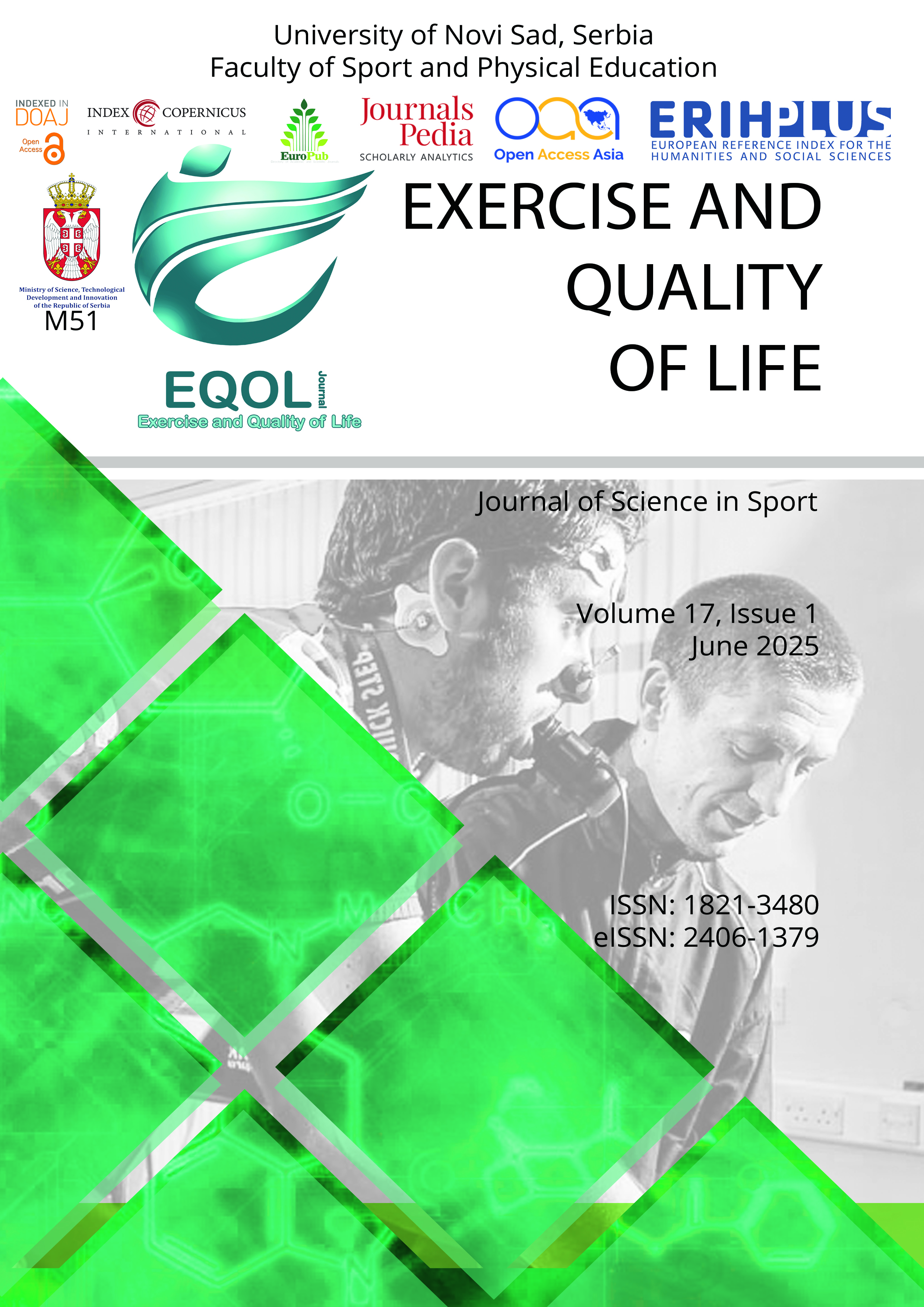Current issue

Volume 17, Issue 1, 2025
Online ISSN: 2406-1379
ISSN: 1821-3480
Volume 17 , Issue 1, (2025)
Published: 15.06.2025.
Open Access
All issues
Contents
14.06.2022.
Original scientific paper
Menstrual status and perceived coaching strategy and training methodology in high-performance female swimmers from Slovenia - Preliminary study
Female swimmers participate in intensive swimming training during their menstrual periods, and they may appreciate additional understanding and flexibility regarding their training volume/intensity. Male coaches often view menstruation contemptuously as an unfortunate state that “is not a disease,” and high-performance female swimmers perceive coaching methods differently. Our study aimed to examine menstrual status and perceived coaching and training methodology. In a cross-sectional study, members of the Slovenian women’s national swim team (n = 14, age: 16.6 ± 3.1 years, body mass index: 20.1 ± 1.9 kg/m2) competing at international and national levels were included. The menstrual status (i.e., regularity, duration, perceived pain before and during menstruation, bleeding) and the opinion of these female swimmers regarding training during their menstrual periods were assessed via our in-depth questionnaire, and the athletes responded to additional questions pertaining to the motivation of swimming, coaching strategy and training methods via a questionnaire. All swimmers included in our study had experienced their first menstrual period, and the majority (85%) reported moderate or heavy menstrual bleeding. Most swimmers (93%) reported that their swimming training was “undisturbed” during their menstrual period; however, 64% of swimmers requested a reduction in training frequency or at least the usual training volume/intensity. In terms of the motivation for swimming, 74% of swimmers reported that they like swimming and like spending time with their friends. In terms of coaching and training methods, the swimmers reported polarized responses, probably because most of them are members of two major swimming clubs with different coaching styles. To conclude, when executed correctly, a similar kind of systematic screening method (i.e., anonymously and perhaps by experienced psychologists) may serve as a valuable tool to further modify training methods at a high-performance level. Moreover, unpleasant issues related to menstrual periods from the athlete’s perspective (i.e., pain, bleeding, malaise, discomfort, inability to achieve maximum effort) should not be ignored, left for swimmers to handle alone, or taken for granted. Male coaches need to seek to understand the impact of menstruation and work with athletes to maximize training.
Boštjan Jakše, Dorica Šajber























